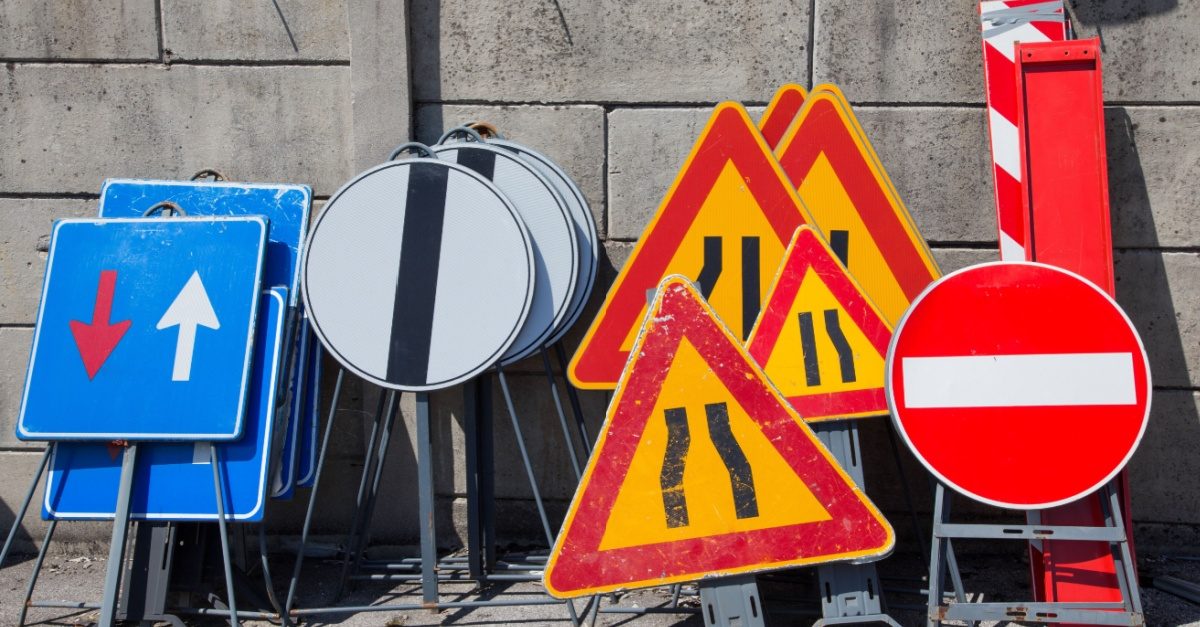
Reflective Signage Night Safety: A Must For Fleet Managers
Driving after dark brings unique risks for fleet vehicles. Reduced visibility and glare from oncoming traffic increase the chance of mistakes and collisions. For fleet managers, improving visibility is one of the most effective ways to protect drivers and vehicles. Reflective signage helps by making road information stand out, giving drivers more time to respond and stay safe.
The Role of Reflective Signage in Night Safety
Reflective signage increases visibility in low light by returning light from vehicle headlights back to the driver’s eyes. This makes signs, markings, and warnings easier to see from a distance.
Retroreflection, the technology behind reflective signs, uses glass beads or microprisms that send light directly back to its source. This simple yet effective design helps drivers identify road instructions faster, even in dark or foggy conditions. Because of this, reflective signage plays a key role in helping drivers avoid confusion and navigate safely during night operations.
Benefits for Fleet Operations
For fleets, reflective signage supports safer and smoother journeys.
- Fewer incidents: Drivers can anticipate turns, junctions, or hazards more easily, reducing collisions.
- Improved navigation: Clearer regulatory and directional signs help drivers follow routes correctly.
- Lower costs: Preventing accidents reduces maintenance expenses, downtime, and insurance claims.
Together, these benefits make reflective signage a practical investment for any fleet.
Reflective Materials and Compliance Standards
The quality of reflective materials affects how well signs perform at night. Fleet managers often struggle to decide which materials and standards offer the best balance of visibility and durability. Trusted manufacturers like Corsign explain how proper reflective signage design improves night-time road safety, helping operators make informed choices that align with current regulations.
Engineering-grade signs provide basic brightness for low-traffic areas. High-intensity prismatic and diamond-grade options reflect more light, making them ideal for highways and frequently used routes. Reflective aluminium signs also hold up well under tough weather conditions, keeping markings bright and readable for years.
Standards such as ASTM D4956 set clear guidelines for reflectivity and colour performance. Following these standards ensures that signs meet the expected brightness levels throughout their lifespan. Fleet managers should also comply with the Manual on Uniform Traffic Control Devices (MUTCD), which specifies correct shapes, colours, and placements for all traffic signs. Using compliant materials helps fleets maintain both safety and legal accuracy.
Types of Reflective Signs and Markings Used by Fleets
Different reflective signs and markings serve distinct functions on the road. Choosing the right type ensures visibility where it’s needed most.
- Reflective traffic signs: Include regulatory signs like “Stop” or “Yield,” as well as warning and directional signs.
- Reflective stickers and decals: Applied to vehicles to enhance side and rear visibility.
- Pavement markings: Reflective lines, arrows, and studs that help drivers stay in lane and judge road curves.
- Pedestrian crossings: Reflective borders and markings alert drivers to crossings well ahead of time.
Each element contributes to a clear and predictable driving environment, reducing confusion and improving overall safety.
Practical Tips for Fleet Managers
Fleet managers can strengthen night safety by reviewing how well their signage performs in real conditions.
- Inspect routes at night: Check if signs and vehicle decals remain visible under headlights. Replace faded or damaged items quickly.
- Select the right grade: Use higher-grade materials like diamond or high-intensity prismatic sheeting for busy or high-speed routes.
- Clean and maintain regularly: Dirt or fading reduces reflectivity. Routine cleaning keeps materials bright and effective.
- Source from trusted suppliers: Work only with certified providers who meet ASTM D4956 and MUTCD standards.
Regular audits and upkeep help truck fleets maintain consistent visibility without unnecessary costs or downtime.
Safer Roads Through Better Visibility
Reflective signage not only protects fleet drivers but also benefits everyone on the road. Clearer signs give drivers more reaction time, lowering the risk of collisions, especially in low-light or rainy conditions.
Fleets that invest in quality reflective materials often report better driver confidence and fewer night-time incidents. These upgrades also show commitment to public safety, which strengthens a company’s reputation. In the long term, well-maintained reflective signs provide both financial and safety advantages for fleet operators.
Conclusion
For fleet managers, reflective signage is one of the simplest and most effective tools for improving night-time safety. By choosing high-quality materials, maintaining visibility standards, and replacing worn-out signs promptly, they can protect drivers and ensure smooth operations.
Good signage not only prevents accidents but also builds trust in a fleet’s professionalism. When visibility stays clear, every journey becomes safer for drivers, passengers, and the public alike.
Increase the performance of your logistics team with IoSCM. Call 0800 1422 522 today to find out how we can help you.

